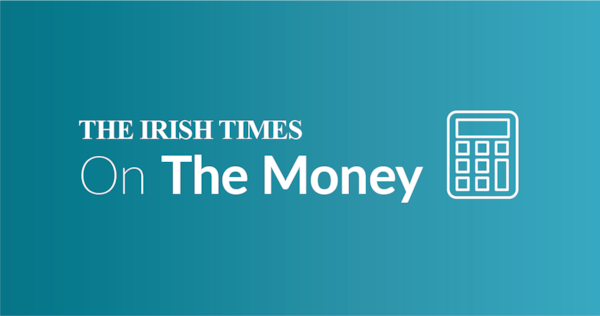October’s budget is quickly coming into focus, with the Government publishing a key pre-budget document, the summer economic statement, this week.
And Ministers face a string of key decisions about the shape of the package, which will have implications for voters’ pockets.
Voters have got used to giveaway budgets. But despite budget measures of €9.4 billion being signalled, the benefits to households could be significantly less. Here are the big calls facing the Cabinet.
Are we (really) not going to have a cost-of-living package?
Senior Ministers have indicated that the days of cost-of-living packages – one-off payments to help households – are over. But some of their statements have seemed a touch equivocal.
RM Block
The dilemma they face is that these payments have been a significant part of the budget “giveaways” in recent years – and households will notice the difference if they are not there.
[ Government’s spending overruns amount to ‘poor planning’, Fiscal Council saysOpens in new window ]
Compared with the last year, this is particularly the case for households with a number of children, who benefited from two double-payment weeks last year.
As the 2025 budget documents show, for a single worker on €50,000, the permanent budget measures delivered about €860 per year extra, while the two energy credits added €250 to this, a nice bonus.
For a family on a similar income with two children and one parent in employment, the total gains were about €1,600, but about half of this came from the one-off measures, with €560 from the two double child benefit weeks alone.

How will the updated National Development Plan shape Ireland in years to come?
The cost-of-living package was also used to direct help to less well-off households – and conceivably this could happen again, though campaigners argue these families need permanent supports.
But the big financial cost was from the so-called universal measures, paid to people on all incomes. If the budget numbers tighten due to the impact of tariffs, these may, indeed, be finally off the table. But if corporation tax keeps rolling in and the cost of living remains a political issue, might the Coalition be tempted to soften the blow with some kind of package?
How big will the income tax package be?
The summer economic statement indicated that there would be scope for a tax package of about €1.5 billion. But a substantial part of this would be taken up if the VAT rate on hospitality is cut to 9 per cent, as the Coalition promised.
[ What did the summer economic statement really tell us about Budget 2026?Opens in new window ]
Along with retaining the lower VAT rate on household energy bills, this would cost €1 billion in a full year. However, as The Irish Times has reported, there are ways to reduce this bill – restricting the cut to food services would be one, though senior Government officials warn that this is operationally difficult.
And the VAT rate cut could be introduced in time for the summer season next year, rather than at the start of the year, thus reducing the cost for 2026 and leaving scope for an income tax package.
Some revenue could also be raised elsewhere, to help pay for budget income tax cuts.
In last year’s budget, an income tax package costing €1.1 billion was introduced. The Coalition would probably hope for something similar this October.
This delivered between €800 and €1,200 per year to households – about €1,000 to many, in fact. Again, the outlook on tariffs will be a factor in the room for manoeuvre here.
While the Irish Fiscal Advisory Council has argued that, ideally, the Government should be increasing budget giveaways if the economy is hit in order to soften the blow, the Government’s decisions will be driven more by how much cash is available.
[ ‘Economic vandalism’: Unions condemn plan to cut VAT for hospitality sectorOpens in new window ]
Along with the cost-of-living package, income tax cuts were the key factor delivering cash gains to households last October.
However, it is important to note that the changes in credits and tax bands last year would just have adjusted the system for inflation – and ensured that, as wages rose, people did not pay slightly more as a proportion of their income. It is thus debatable whether it is a tax “cut” at all.
The Tax Strategy Group papers, drawn up by senior civil servants and published on Thursday, estimated that indexing the income tax system for wage inflation at 4 per cent would cost about €1 billion in 2026, probably using up the entire package.
What about pensions and welfare?
If the scope for income tax cuts is a little uncertain, we really do not have much clarity at all on the room for manoeuvre on the spending side of the budget.
The summer economic statement did show that the Government planned a 6.4 per cent increase in permanent day-to-day spending next year – and this comes to €5.9 billion in cash terms. But how much of this will be eaten up by paying for the rising cost of departmental services and how much will be left for welfare and pensions is not clear.
Again, the Coalition may take last year’s budget – which delivered a €12 increase in the main weekly welfare rates and the State pension – as a marker for this year’s package.
That would keep the growth of incomes for those reliant on such payments somewhere in line with likely income growth across the economy.
The Coalition has been examining the idea of a new second child benefit payment for those on lower incomes – which would take in the payment already made in this regard for people on welfare – as well as other options for helping less well-off families.
However, the Tax Strategy Group says that implementing these payments would be complex and instead it concentrates on costing out increases in current payments.
Several one-off payments were also made in last year’s budget to those in receipt of certain welfare payments last year – including €200 to those on the living alone allowance and €400 to those in receipt of the carer’s payment and disability allowance.
These were part of the cost-of-living package, though were not costly in overall budget terms. It remains to be seen if any are repeated, or if money is directed entirely to permanent changes.
[ Budget plan for €9.4bn public spending boost will be reconsidered if tariffs hitOpens in new window ]
So, is that it?
Those are the items that will have the most impact on households. But there is a host of other decisions that specific households will look out for. Will mortgage interest relief – mainly benefiting those on tracker mortgages and delivering maximum benefits of €1,250 – be renewed?
It was introduced two years ago and renewed for 2025. It looks unlikely to be repeated, given the fall in interest rates. Will the Government continue to push up carbon taxes, which raised a useful €122 million extra this year?
It probably will, leading to a rise in the cost of fuel. Will there be another increase in the renter’s tax credit, which delivered €250 more to a single renter this year and €500 to a jointly assessed couple for 2025?
The continued rise in rental cost will keep the pressure on the Government to do something here. And will smokers be hit again by higher excise duty? Again, quite likely, particularly as this can raise revenue to be spent elsewhere, even though the tax is now so high that the yield from further increases may be uncertain.
As with the rest of the package, these smaller issues will all be framed by the wider picture. We have yet to see the Department of Finance forecast for tax revenue and the budget surplus next year. And these will be crucial.











